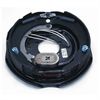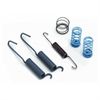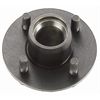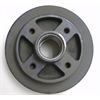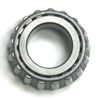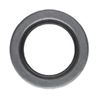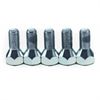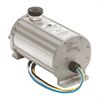How Electric Brakes Work
Monday, January 7, 2013 — 32 Comments
Take a look at the major parts that make up a brake assembly:
- Reactor Spring
- Actuating Arm
- Shoe Hold-Down Spring
- Primary Shoe
- Adjuster
- Adjuster Spring
- Magnet
- Secondary Shoe

The large center circle represents the hole through which the trailer spindle goes, so we can install the backing plate on the axle. The 4 smaller holes represent bolt holes which are used to bolt the backing plate onto the Brake Flange which sits behind the spindle.
How does electricity make this brake work? The magnet in the backing plate has 2 conductor wires which tap directly into the trailer wiring. When electricity is on, it magnetizes the brake magnet. The magnet is attracted to the drum face. When it contacts this area, the friction causes it to rotate, which moves the actuating arm, and pushes the shoes out against the drum. Those shoes have a special brake pad material on them that resists the heat caused by that friction. When the shoes press against the inside of the drum, they prevent the hub, and consequently the wheel that's touching the ground from spinning.
How does the electricity get to the trailer brakes? Where does it come from? How do we know which brake to use? Here's how it works: An electrical connection on the trailer plugs into the connector on the vehicle. There are electrical wires running from the trailer connector back to each brake on the axle, as well as to the trailer lights, to create a complete circuit. When the driver steps on the brakes it sends a current to the brake control in the vehicle. The brake control then sends a current back to the trailer to activate the brakes. Here's what that looks like:

OTHER TRAILER ELECTRIC BRAKE RESOURCES
| What Are Electric Brakes? | Do I Need Electric Brakes? |
| Testing Trailer Brake Magnets | How Do I Detetermin My Bolt Pattern? |
| Electric Brakes in Salt Water |
Now that you know how an Electric Brake works, go ahead and find the part you need from the trailer brake assembly




